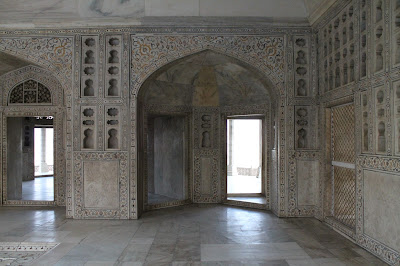Since the early days of my trip planning, when it became
clear that Southeast Asia was going to be my destination of choice, I commented
with my friends how awesome might it be to spend New Year’s Eve in Bangkok –
considered by far greater minds than mine to be the craziest spot in the world.
Little did I know that such a vague desire would become a very real experience
very soon.
By the end of December my friends and I were chilling in
Kolkata again, recovering ourselves from the great but tiresome trip north to
Darjeeling and Gangtok. During the previous weeks I had tried to coax some of
them into joining me to a Bangkok sortie during New Year’s Eve, and even got my
Vietnamese-Australian friend Dûc to consider it, but in the end there was no
one to go with me. Not really willing to go there alone, I had resigned myself
to spend the date in Kolkata. But then, Fate had other plans.
On December 29th I was convinced by strange
forces in the cosmos to face Kolkata’s hellish transportation procedures to
accompany my girlie friends Juanita (from Mexico), Kimlee (Australia), Fernanda
and Micaela (both from Brazil) on a shopping trip to New Market, the city’s
biggest open bazaar. After some oh-so-very-fun-please-God-kill-me-now hours of
negotiating and fending off touts, we decided to take a late-afternoon walk in
Park Street. When passing in front of the place’s McDonald’s, Fernanda madly
insisted that we go in for her to grab something to it, since she hadn’t have a
good lunch. We conceded the point after a while, and entered the place.
 |
| Having lunch at New Market's street food stalls |
Meanwhile, in a different part of the city, our German
friend Julia decided to finally pay a visit to the Victoria Memorial, Kolkata’s
main landmark. While at it, she was struggling to take auto-photos (we’ve all
been there), when two guys approached her to help. To her surprise, they were
also German, and so they hanged together for the rest of the afternoon. By the
end of the day, they also moved to Park Street, and since Julia could hardly
touch any Indian food, they found their way to a McDonald’s to eat something.
In a very crowded restaurant, they managed to choose the same floor and find a
table right next… to us.
Thus I was introduced to Julian and Tobias. Juli and Tobi
are two very smart and laid-back guys that were just ending their Indian loop
of more than one month and going to Thailand the next day. I was excited to
find people that were going to do exactly what I previously had in mind, and
after a while it became clear that I could get along well with them. They
half-jokingly invited me to join them and I told them I’d check prices and
availability and try to make it, but even I didn’t believe it would be possible
in such a short notice. From that point, one thing led to another, and December
31st found me in a plane heading to Bangkok!
 |
| Tobi, Juli and I |
Half-disbelieving that I was actually doing that, I arrived
in Bangkok by late afternoon and thanks to city great public transport system
and orderliness, I quickly found my way to Tobi and Juli’s hostel. We met
there, and by 10 pm we joined the other foreigners there into Bangkok’s crazy
nightlife.
The hostel – by the way one of the best I’ve ever stayed at
– was actually set up and run by Dave, a 60-year old American man who loved Bangkok
and was living there for the last 12 years. He was a very nice and friendly
guy, and offered to be our guide for the parties. “Believe me, if there was any
better way to spend New Year’s Eve, I’d know it”. We gladly joined him.
 |
| Dave, our host and guide to Bangkok's nightlife |
Well, some of you might be expecting a very thorough and
detailed account of New Year’s Eve there, but the truth is that some stories
are better left untold, and frankly, I don’t recall everything that happened
there all that clearly, so… I will let the pictures speak for themselves. For
further reference , you may watch The
Hangover 2. =D
 |
| The gang - we even had our own Japanese guy |
 |
| Nana's `hood |
By sunrise, we proclaimed total success: we were alive and
in one piece, with all fingers and teeth, no tattoos, and no ladyboys had their
way with us. I even had my camera with me, despite its travelling from hand to
hand like crazy in one of the nightclubs.
Victorious, we slept the sleep of the just. For a long time.
































